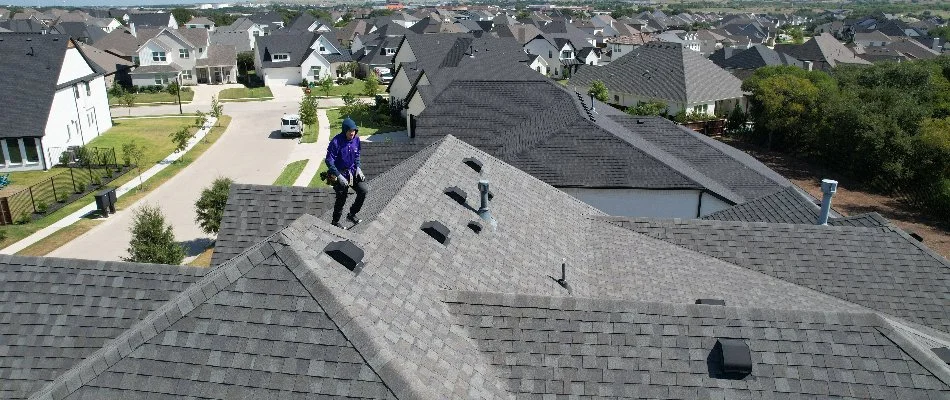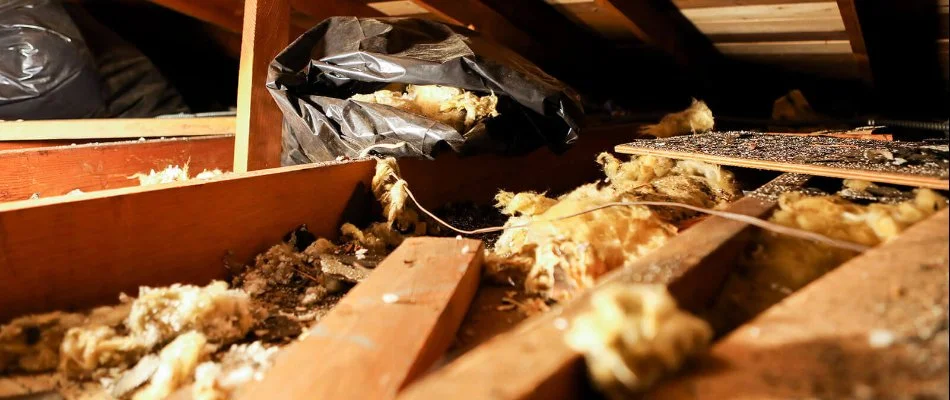Pest infestations, especially those involving rodents and other wildlife, can lead to severe damage in both residential and commercial properties. These pests have a notorious reputation for chewing through electrical wires, damaging building insulation, and even compromising structural elements. The cost of repairing such damage, combined with the potential health hazards pests present, makes proactive pest management an essential practice. This comprehensive guide delves into pest exclusion and remediation services, covering detection methods, exclusion strategies, and the health risks associated with infestations.
Understanding the Importance of Pest Exclusion

What Does Pest Exclusion Involve?
Pest exclusion is a preventive strategy within the broader framework of Integrated Pest Management (IPM). Unlike traditional pest control methods that react to infestations after they occur, exclusion focuses on keeping pests out of your home or business from the outset. By identifying and sealing potential entry points, pest exclusion minimizes the risk of infestations, thereby protecting your property and the health of its occupants.
Why Is Pest Exclusion So Important?
The importance of pest exclusion is significant, as pests, particularly rodents, can inflict extensive damage to structures. Rodents gnaw on a variety of materials, including electrical wires, which can lead to short circuits and potentially fires. Damage to insulation and other building components can undermine the structural integrity of your property. Beyond the physical damage, pests pose serious health risks by contaminating surfaces with pathogens, spreading diseases, and triggering allergies.
The Long-Term Advantages of Pest Exclusion
Investing in pest exclusion offers long-lasting benefits. By preventing pests from entering your property, you can avoid the costly repairs that come with infestations. Additionally, exclusion measures help protect the health of occupants by reducing the risk of disease transmission and allergen exposure. Properties that are free from pests are also more appealing to potential buyers or tenants, thereby increasing their market value. Finally, knowing that your home or business is safeguarded against pests provides peace of mind.
Detecting Potential Pest Entry Points
Where Do Pests Enter?
Pests can find their way into your property through various entry points, many of which might not be immediately obvious. Common entry points include gaps around windows and doors, which, despite their small size, can allow insects and rodents to slip through. Cracks in the foundation provide another avenue for pests, particularly those that originate underground. Vents and chimneys, which are designed for ventilation or smoke, can also serve as entry points for wildlife. The roofline and eaves are often targeted by birds and rodents seeking access to attics. Additionally, utility lines and pipes entering through walls offer a path for pests to follow.
Recognizing Signs of Pest Activity
Early detection of pest activity is crucial for effective exclusion and remediation. Some common indicators of pest presence include droppings, which are often found in hidden areas such as cabinets, attics, and basements. Gnaw marks on wires, insulation, or wood signal rodent activity, while nests may be discovered in attics, behind walls, or in other concealed spaces. Unusual noises, such as scratching or scurrying within walls or ceilings, are often a clear sign of pests. Damaged food packaging, especially in pantries or storage areas, suggests that pests have been foraging.
The Role of Professional Inspections
While some signs of pests are easy to spot, a professional inspection is essential for identifying all potential entry points and assessing the full extent of an infestation. Professionals employ advanced tools and techniques to conduct a comprehensive examination of your property, from the roof down to the foundation. This detailed inspection forms the basis for an effective pest exclusion strategy, ensuring that no vulnerabilities are overlooked.
Our Comprehensive Process: Pest Exclusion and Remediation

Thorough Property Inspection
Our pest exclusion and remediation process begins with a meticulous inspection of your property. This includes an exterior assessment to identify gaps, cracks, and other potential entry points that could allow pests inside. We also perform an interior inspection, looking for evidence of pest activity such as droppings, nests, and damage to insulation or wiring. Attics and crawl spaces, often overlooked areas that are common sites of infestations, are carefully examined. Additionally, the foundation is checked for cracks and other vulnerabilities that pests could exploit.
Crafting a Tailored Exclusion Strategy
Following the inspection, we develop a customized exclusion strategy designed to address the specific needs of your property. This strategy involves sealing all identified entry points using durable materials that ensure pests cannot re-enter. Any damage caused by pests, such as chewed wires or compromised insulation, is repaired as part of our remediation efforts. In addition to these immediate repairs, we implement preventive measures, like installing screens over vents and reinforcing vulnerable areas, to provide long-term protection against pests.
Expert Remediation Techniques
In cases where pests have already caused damage, our remediation services become a critical component of the process. This involves the removal of any contaminated insulation, particularly when it has been soiled by rodent feces and urine. The affected area is then thoroughly sanitized to eliminate pathogens and odors, ensuring a safe environment. Finally, we install high-quality replacement insulation to restore your property’s energy efficiency and structural integrity.
Specialized Rodent Remediation
Rodents, being among the most destructive pests, often infiltrate insulation, where they can cause significant contamination. Our rodent-specific remediation process involves the careful removal of insulation contaminated by rodent activity, followed by thorough sanitization of the affected area. To prevent future infestations, we recommend the installation of TAP Insulation, which not only provides thermal insulation but also offers pest control benefits.
TAP Insulation: An Eco-Friendly Solution
Understanding TAP Insulation
TAP (Thermal Acoustical Pest Control) Insulation is a distinctive product that combines the benefits of insulation with pest control. Made from recycled paper and treated with borate, a natural mineral, TAP Insulation offers superior thermal and acoustic insulation while also deterring pests. The borate treatment is effective against self-grooming insects such as ants, cockroaches, silverfish, and termites, yet it remains safe for humans and pets.
How TAP Insulation Works
TAP Insulation functions by creating a barrier that pests cannot penetrate. The borate treatment within the insulation is lethal to insects, providing ongoing protection against pest infestations. In addition to its pest control properties, TAP Insulation helps control existing infestations and prevents pests from establishing nests within your attic or walls. This dual functionality makes TAP Insulation an excellent choice for homeowners seeking both energy efficiency and long-term pest control.
The Benefits of TAP Insulation
TAP Insulation offers numerous advantages. As an eco-friendly product, it is made from recycled materials and treated with a naturally occurring substance, making it an environmentally responsible choice. The insulation enhances your property’s energy efficiency by reducing heat loss during the winter and minimizing heat gain in the summer, leading to lower energy bills. Unlike traditional insulation, TAP Insulation provides continuous pest control, significantly reducing the likelihood of future infestations. Additionally, the acoustical properties of TAP Insulation help reduce noise pollution, contributing to a quieter indoor environment.
Health Hazards Posed by Pest Infestations

Disease Transmission by Pests
Pests are not merely a nuisance; they can also pose significant health risks by transmitting diseases. Rodents, for example, are known to spread diseases such as hantavirus, leptospirosis, and salmonella through their droppings, urine, and saliva. Cockroaches, on the other hand, can carry pathogens like E. coli and Salmonella, which are common causes of foodborne illnesses. Mosquitoes are infamous for transmitting diseases like West Nile virus, dengue fever, and malaria. Each of these pests can introduce harmful microorganisms into your living or working environment, potentially leading to serious health issues.
Allergens and Respiratory Issues
In addition to disease transmission, pests can also trigger allergies and exacerbate respiratory conditions. Cockroach droppings, shed skins, and saliva contain allergens that can cause allergic reactions in sensitive individuals. Dust mites, another common household pest, are a major contributor to indoor allergens, particularly in people with asthma. Rodents can also introduce allergens into the home through their urine and dander. The accumulation of these allergens can lead to respiratory issues, particularly in children and the elderly, making pest exclusion and remediation an essential component of maintaining a healthy indoor environment.
Conclusion
Pest exclusion and remediation are critical for protecting both the physical integrity of your property and the health of its occupants. By preventing pests from entering your home or business, you can avoid the extensive damage and health risks associated with infestations. Our comprehensive approach to pest exclusion includes thorough inspections, customized strategies, expert remediation, and the use of advanced solutions like TAP Insulation. Do not wait for pests to cause significant damage—take proactive steps today to safeguard your property and ensure a safe, healthy living environment.
Take Action Now
Contact us at (817) 880-6052 to schedule your pest exclusion and remediation service today. Let us help you protect your home or business from the costly and dangerous effects of pest infestations, providing you with long-term peace of mind.




Comments (0)
Thanks for your comment!
Thanks for your feedback! Your comments have been successfully submitted! Please note, all comments require admin approval prior to display.
Error submitting comment!
There is a problem with your comment, please see below and try again.